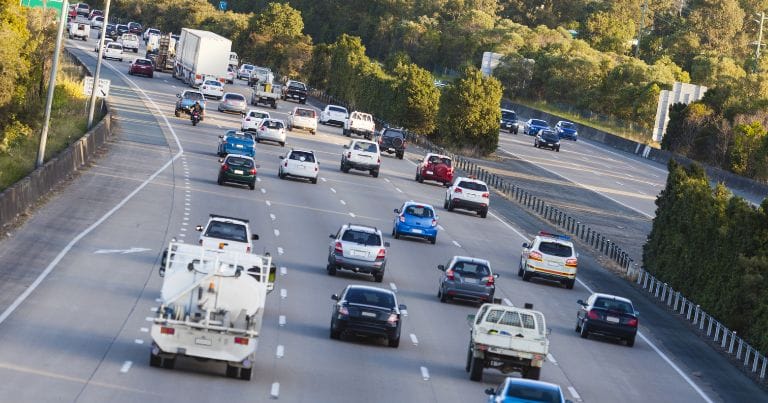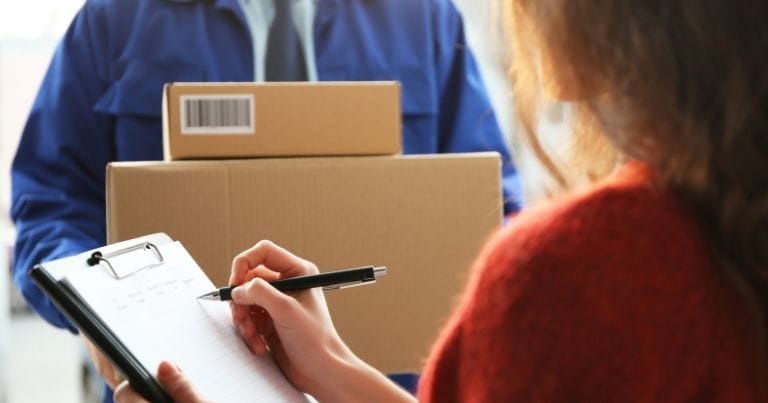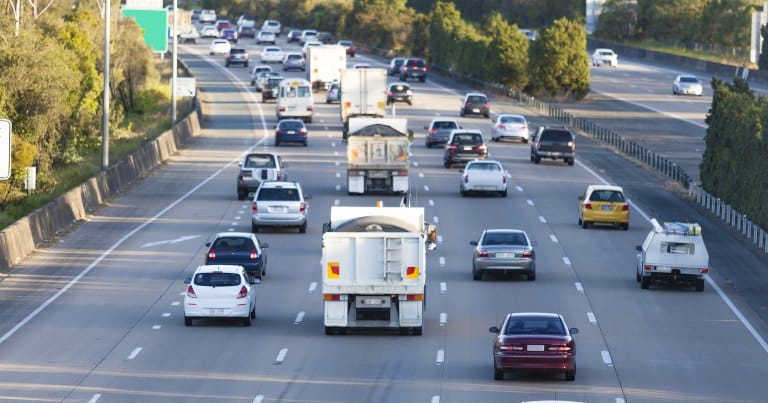What is Last Mile Delivery?
Ever wondered how your online order always seems to arrive on time? The secret lies in last mile delivery – the final, and often most complex, stage of the logistics process. It’s the step that bridges the gap between distribution centres and your doorstep, making speed, efficiency, and reliability critical. This phase is critical for supply chain efficiency and directly impacts delivery speed, customer satisfaction, and operational costs.
Managing the last mile is often the most expensive and complex part of fulfilment. It requires careful coordination of transportation logistics, real-time tracking, and proactive customer communication – all working together to ensure deliveries arrive on time and expectations are met.
For example, Amazon relies on last mile logistics to ensure same-day or next-day shipping. After a package leaves a fulfilment hub, it is routed through local warehouses, assigned to a delivery driver, and optimised using AI-powered route planning software. If a customer isn’t home, automated notifications and real-time tracking updates help reschedule or reroute the package, reducing failed deliveries and improving the overall experience.
But it’s not just global giants making last mile delivery work. Grant Walker Parts is a great example of how a growing business improved delivery speed and customer service with MachShip. By streamlining bookings, managing higher freight volumes, and providing real-time parcel tracking, their team gained better visibility, allowing them to handle delivery enquiries quickly and keep customers informed – showing that efficient last mile logistics benefits businesses of any size.
With so much riding on this final stage, it’s clear why last mile delivery is critical to overall logistics success. Now that we’ve defined last mile delivery, let’s explore why it matters and what happens when businesses fail to get it right.

Key Components of Last Mile Delivery
How do businesses stay ahead in last mile logistics? The key lies in leveraging the right technology and processes to ensure efficient, cost-effective deliveries. Solutions such as real-time tracking, automated freight booking, and intelligent carrier selection enhance visibility, streamline operations, and improve delivery accuracy.
These innovations work together with other essential components, including:
Advanced Technology
Modern logistics rely on technology-driven solutions to enhance efficiency and visibility:
- Real-time tracking and carrier visibility – Provides businesses with live shipment updates, ensuring transparency and reducing delays.
- Predictive analytics – Helps anticipate delays and reroute shipments efficiently.
- Delivery automation – AI-driven logistics optimise scheduling and dispatching.
Example: Systems like MachShip help businesses streamline freight tracking and last mile carrier management with automated logistics solutions.
Transparent Communication
Clear updates between businesses, carriers, and customers ensure smooth deliveries. Features like:
- Automated SMS and email notifications
- Live tracking updates
- ETA adjustments based on real-time traffic conditions
For example, businesses using MachShip benefit from automated notifications and live tracking updates, which reduce customer inquiries and improve overall delivery transparency.
Diverse Transportation Methods
Choosing the right last mile delivery vehicle impacts cost, sustainability, and efficiency. Options include:
- Delivery vans and trucks – Standard for high-volume shipping.
- Bicycle couriers – Ideal for urban delivery services and sustainable logistics.
- Electric vehicles (EVs) – Reduce carbon footprint and lower fuel costs.
- Crowdsourced delivery networks – Utilise gig workers for flexible fulfilment solutions.
For example, businesses using MachShip can integrate multiple carriers to ensure the most efficient last mile delivery options, allowing for flexibility in managing demand and cost-effectiveness while maintaining delivery reliability.

Why Last Mile Delivery Matters
Why does last mile delivery matter for your business? It directly affects your efficiency, customer satisfaction, and competitiveness. In an industry where speed and reliability are everything, businesses that optimise their last mile operations gain a significant advantage.
It affects:
- Customer experience: Faster deliveries increase satisfaction and loyalty.
- Cost efficiency: Optimised routes lower fuel costs and reduce delivery failures.
- Brand reputation: Reliable shipping solutions improve trust and repeat purchases.
On the flip side, poor last mile execution leads to:
- Delayed shipments, frustrating customers and reducing repeat business.
- High delivery costs, affecting overall profitability.
- Failed deliveries, increasing operational overhead.
With the rise of e-commerce fulfilment, customers now expect:
- Same-day delivery
- Scheduled delivery slots
- Contactless drop-offs
- Out of home deliveries to PUDO networks
Retailers, couriers, and logistics providers must adopt smart delivery solutions to stay competitive. As consumers expect faster and faster shipping options, investing in technology-driven logistics is no longer optional – it’s a necessity. Businesses must rethink how they approach the last mile by leveraging solutions like automated freight booking, real-time carrier tracking, and intelligent cost control tools. With platforms like MachShip, companies can streamline their delivery processes, optimise freight routing, and reduce manual workload, ensuring efficiency and reliability at scale.
Explore our customer success stories to see how our customers improve their last mile delivery.
Overcoming Last Mile Delivery Challenges
Now that we’ve covered the biggest challenges, let’s look at how businesses can tackle them effectively.
Traffic Congestion
Urban areas experience heavy road congestion, leading to delays.
Solutions:
- Use micro-fulfilment centres near high-demand areas.
- Implement AI-based traffic prediction to reroute drivers.
- Use a PUDO point to deliver many parcels to one location
High Operational Costs
Fuel, labour, and vehicle maintenance increase last mile logistics expenses.
Solutions:
- Shift to electric delivery vehicles to lower costs.
- Use predictive demand forecasting to optimise resource allocation.
- Reduce your drop density by utilising a PUDO network
Failed Deliveries
Missed drop-offs result in extra costs and customer dissatisfaction.
Solutions:
- Offer flexible delivery windows and self-service pickup points.
- Use geofencing alerts to notify customers when a delivery is approaching.
- Offer out-of-home delivery options such as a parcel shop or a parcel locker
Best Strategies for Last Mile Optimisation
To overcome last mile delivery challenges, businesses must adopt proactive strategies that enhance efficiency, reduce costs, and meet customer expectations. By leveraging the right technology and operational improvements, companies can optimise their final-mile logistics and gain a competitive edge.
- Leverage local distribution centres – Reduces delivery distances and improves speed-to-door efficiency.
- Use predictive analytics – Helps businesses anticipate delays and plan optimal shipping routes.
- Integrate AI for dynamic dispatching – AI-driven courier assignment boosts efficiency.
- Offer multiple delivery options – Same-day, express, or eco-friendly shipping choices improve customer retention.
- Use a PUDO network – A network of locations that can receive your parcel while you are at work. Parcel lockers, parcel shops retail stores.
Final Thoughts
In today’s competitive logistics landscape, last mile delivery is no longer just an operational detail – it’s a key driver of customer loyalty and business success. Optimising last mile delivery is the place to start if you’re looking to reduce costs, boost customer satisfaction, and future-proof your operations.
The success of last mile delivery lies in balancing speed, cost, and reliability. Businesses that invest in the right technology, streamline processes, and adapt to evolving consumer expectations will be best positioned to succeed. Whether through real-time tracking, optimised routing, or better communication, refining the final mile of logistics can make all the difference in customer satisfaction and long-term profitability.
Frequently Asked Questions
What is last mile delivery?
Last mile delivery refers to the final stage of the supply chain, where packages are transported from a local hub to the customer’s doorstep.
Why is last mile delivery expensive?
Costs are high due to fuel prices, labour expenses, failed deliveries, and inefficient route planning.
How can businesses optimise last mile delivery?
MachShip helps businesses improve last mile efficiency with automated freight booking, real-time carrier tracking, and intelligent rate management. By integrating these tools, companies can streamline logistics, reduce manual workload, and enhance delivery accuracy.
What are the biggest challenges in last mile delivery?
Traffic congestion, high operational costs, and customer expectations for faster shipping complicate last mile logistics.
How does failed delivery impact businesses?
Missed drop-offs increase costs, delay shipments, and reduce customer satisfaction. Solutions include smart lockers, scheduled deliveries, and contactless drop-offs.
How can last mile delivery be more eco-friendly?
Adopting electric vehicles, bicycle couriers, and AI-powered route optimisation can reduce emissions and lower environmental impact.
What is the difference between last mile delivery and standard delivery?
Last mile delivery refers to the final leg of the journey from a local hub to the customer. In contrast, standard delivery may refer to the overall process from warehouse to destination.
How do businesses manage last mile delivery challenges?
They use technology such as route optimisation, real-time tracking, and automated customer notifications to manage delays and improve efficiency.
What are the benefits of last mile delivery software?
Last mile delivery software improves accuracy, reduces delivery times, and enhances the customer experience with live tracking and communication tools.

